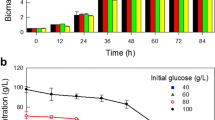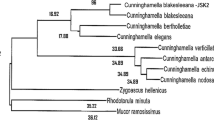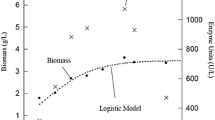Abstract.
A newly isolated strain of Cunninghamella echinulata grown on glucose produced significant quantities of biomass and cellular lipids in media with high C/N ratio. The oil yield from glucose consumed increased after nitrogen exhaustion in the growth medium, but γ-linolenic acid (GLA) content in cellular oil systematically decreased during the lipid accumulation process. When lipid accumulation was completed, GLA concentration in the cellular lipids progressively increased. The highest GLA production (720 mg/l) was achieved in medium with a C/N ratio equal to 163. C. echinulata was also able to grow on orange peel. The C/N ratio in the orange peel decreased from 50 to 26 during solid-state fermentation. Maximum oxygen uptake was observed during assimilation of reducing sugars, whereas a polygalacturonase activity was detected after reducing sugars had been exhausted. The maximum GLA production was 1.2–1.5 mg/g of fermented peel, calculated on a dry weight basis. After enrichment of the pulp with inorganic nitrogen and glucose, an increase in the production of oil and GLA was observed.
Similar content being viewed by others
Author information
Authors and Affiliations
Additional information
Electronic Publication
Rights and permissions
About this article
Cite this article
Gema, .H., Kavadia, .A., Dimou, .D. et al. Production of γ-linolenic acid by Cunninghamella echinulata cultivated on glucose and orange peel. Appl Microbiol Biotechnol 58, 303–307 (2002). https://doi.org/10.1007/s00253-001-0910-7
Received:
Revised:
Accepted:
Issue Date:
DOI: https://doi.org/10.1007/s00253-001-0910-7




